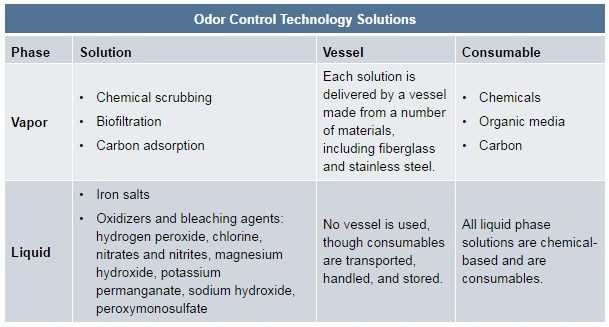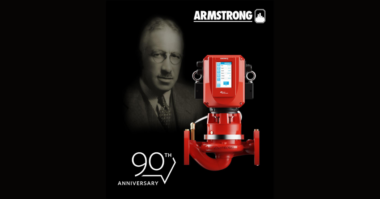The global pumps market in the water and wastewater industry has good growth prospects in the wastewater applications segment, as companies and governments are exploring technologies that enable the conversion of wastewater into reusable water to meet the needs of a growing population. The challenges in the municipal water sector are interlinked and have a domino effect, wherein municipal market revenues are controlled by regulations and limited by capital availability. Infrastructure built 40 years ago is past its useful life and requires large-scale rehabilitation, thus requires funding. Conditions, such as unavailability of required resources—financial and human—combined with regulatory norms, work in favor of private investors and new business models.
The global municipal water industry is being influenced by extreme weather conditions due to climate change, which is creating a burden on the network and treatment infrastructure. This trend calls for pressure management, water reuse, and new treatment methods. On the other hand, urbanization and population growth are contributing greatly toward water scarcity, which widens the infrastructure gap. Other pressing concerns that most developed countries are currently facing include aging infrastructure and poor accountability; these two factors are acting as precursors to non-revenue water (NRW). NRW rates affect the pricing of water (if not controlled by subsidies) and restrain the utility revenue.
With time, new contaminants in water and wastewater are increasing, resulting in the need for new treatment technologies and specialty chemicals. Disposal of sludge, recovery of energy and nutrients, and reuse of materials are needed for sustainability and implementation of a circular economy. However, with limited capital, growing demand and the need for efficient management of utility services, smart water solutions and a customer-centric approach will need to be adopted to bring about a change in the way water is managed.
Municipal Water—Regional Outlook
Asia-Pacific:
- APAC is expected to see major growth from new connections and will tap the potential to expand existing services. Top predictions for the water industry for 2017 include significant reductions in non-revenue water, which is bound to become a top priority for developing nations as non-revenue water rates can reach 45 percent of water produced in some markets.
- Large developed markets such as Japan and Australia are expected to direct their capital programs toward achieving process and energy efficiency. Water utilities are also bound to face challenges in controlling operational costs, resulting in increased focus by industry participants on the cost-reduction features of their equipment. However, from an advancement standpoint, membrane systems and disinfection will continue to be the main focus areas of the municipal water industry’s technological development initiatives.
Europe:
- In the European region, growth will be driven by a focus on process and control improvement technologies. It has been forecasted that the water market is expected to consolidate further in 2017, with service providers acquiring technology providers to bring increased efficiency into operations. The modernization of water and wastewater infrastructure is a priority and will be the primary driver of the projected growth.
- Re-municipalization may pose a threat to private operators; however, it will not impact spending by utilities as the need to sustain operations will continue. Modernization will not only include the refurbishment of physical assets, but also smart infrastructure services, from metering to integrated management through software.
North America:
- The key focus in the NA region would be entirely directed at rehabilitation of infrastructure, which is expected to take up a significant portion of total investment. It has also been ascertained that the growing need to replace and refurbish the aging infrastructure, along with focus on asset management, will be the key driver of growth in North America.
- While infrastructure is rehabilitated in the United States, the focus will also be on evaluating existing systems and rating them for resilience to prioritize investments. A key focus on sustainability will eventually drive investment in water and wastewater treatment technologies, and automation and control of water systems.
- Investments are also being made to address extremities like the California drought and preparedness for extreme weather events. Water networks are to be re-imagined based on catchment areas rather than geographical boundaries.
Middle East & Africa:
- Initially, growth will occur in greenfield projects amidst political and economic turmoil. In 2017, especially, it has been predicted that political volatility in the Middle East and North Africa will continue to have a negative impact on investments in markets such as Iraq, Libya, and Syria.
- Water scarcity is a big issue for the Middle East, and strong growth is forecast in desalination in Saudi Arabia and the Gulf States. Access to financing for these projects has also improved in the past two years. Africa will see growth in access to treated drinking water and water treatment; the funding is expected to be provided as part of global development initiatives.
- Continued efforts are being made to improve revenue collection; non-revenue water is a big issue in many parts of Africa.
Latin America:
- The top prediction for the region is an expected easing of the water crisis in Latin America’s largest market—Brazil. Trans-boundary water policies and investments being implemented and initiated toward combating climate change are expected to continue.
- Insufficient funding and the absence of a strong cost recovery mechanism restrain the development of the municipal water sector. The focus will also remain on bringing down non-revenue water and improving water management, thus attracting investment in process control and management. Investments from organizations such as the World Bank are expected to be directed toward achieving universal access to water and improved sanitation.
Municipal Clean Water Segment and Pump Applications
Pump Market Performance in Municipal Water Industry
- After the major fall of 2009, pumps revenue in municipal applications saw a major spike due to pent-up demand; the orders that were put on hold due to the recession were resumed all at once. The higher-than-average growth rate of 2010 can also be accounted for by the pent up-demand, which lasted until 2011.
- Following these two years of higher-than-average growth, the market returned to its average growth rate of about 4.0 percent. The drop in 2012 is due to evening out of demand pressures.
- The growth of centrifugal pumps, the dominant product segment, is lower than positive displacement pumps, which display a higher growth rate due to increasing wastewater treatment plants. With sustainability being a short-term challenge for pump suppliers, focus on strategic services is expected to enhance the growth prospects across the different application sectors.
- Due to a combination of all these factors, the market is expected to continue growing through the end of the forecast period, registering a CAGR of 2.1 percent from base year through the forecast period.
Pumps in Municipal Application Market—Analysis by Product Segment
Centrifugal Pumps:
- Centrifugal pumps, by and large, constitute the majority of the pump demand coming from municipalities for water and wastewater plants at 74.0 percent. This dominance can be attributed to a wide variety of applications like water supply, water treatment, sewage treatment, and desalination.
- Their inefficiency in processing solid materials suspended in the liquid is a factor contributing to their decreasing market share compared to positive displacement pumps. The centrifugal pumps are particularly used in clean-water application over wastewater.
- Water reuse, which is gaining prominence in the US and in other key developed regions, is contributing somewhat to centrifugal demand, although the effect of this driver is expected to take time to have a major effect. Centrifugal market share decreases from 74.0 percent in the base year to 73.8 percent by the end of the forecast period due to a combination of the abovementioned factors.
- Single-stage radial flow centrifugal pumps are the predominant pump type used in water and wastewater applications. Another major type is the submersible centrifugal pump, which also holds a market majority.
- Wastewater treatment plant application holds a larger share when compared to water treatment application due to a higher number of wastewater treatment plants and the number of centrifugal pumps used in them.
- For certain coastal areas, storm water control and flood water removal are also important centrifugal pump uses. The focus from end users is moving toward energy efficiency, as governments are mandating energy-saving features to cut down on the country energy usage. In light of this, energy-efficient centrifugal pumps can demand a higher price compared to the normal pumps.
Positive Displacement Pumps:
- In terms of positive displacement (PD) pumps, this segment has a market share of 26.0 percent in the base year, which is expected to rise to 26.2 percent by the end of the forecast period. This can be attributed to the ability of positive displacement pumps to handle liquids with suspended matter in them and the increase in the number of wastewater treatment plants in North America.
- After witnessing a major fall in 2009, the pent-up demand accounts for the higher-than-average growth rate of 2010 and 2011, after which the growth rate evens out. Due to their ability to handle suspended matter, PD pumps see a higher deployment in wastewater treatment plants, particularly sewage treatment plants, which involve larger solid sizes.
- Of the positive displacement product types, progressive cavity pumps are expected to witness the maximum growth in the long term compared to the other product types. Water treatment plants continue to rely on positive displacement pumps due to better reliability, higher base efficiency, and low pressure requirements for smaller treatment plants.
- Seawater desalination is an area where positive displacement pump types are not used due to higher capital and higher operating costs required over competing centrifugal pumps. However, this factor is expected to change in the future, as better-quality pumps at lower price points are manufactured.
The Last Word
Major investment into infrastructure upgrades, including water treatment plants as well as pipelines for distribution in both the US and Canada, drives the pumps in municipal application market.
Centrifugal pumps, which hold nearly three-quarters of the market, are expected to see a lower growth rate compared to PD pumps due to an increasing number of sewage treatment plants for which PD pumps are essential. The move toward water reuse to increase water resources within the US is driving investments into process equipment, the majority of which are pumps.
About Frost & Sullivan
Frost & Sullivan’s expert analysts, research experts, and consultants continually evaluate and monitor the Oil & Gas market to develop timely and strategic market intelligence reports, which include growth drivers and restraints, market sizing, market shares, growth rates, competitive analysis, benchmarking, as well as regulatory and technology issues. Through our Oil & Gas Growth Partnership Services program, clients receive a continuous flow of actionable market, technical, and econometric intelligence, and effective strategies for growth. Our global team of market analysts, consultants, and industry experts continuously monitors the market and provides local expertise along with a global perspective.
Frost & Sullivan has experience in the following areas:
- The entire value chain of the O&G industry
- Value proposition for the industry
- Coverage of O&G services industry
Frost & Sullivan leverages more than 50 years of experience in partnering with Global 1000 companies, emerging businesses and the investment community from over 40 offices on six continents.






[…] Read the full report from Frost & Sullivan about “Growing Pump Applications in Municipal C… […]